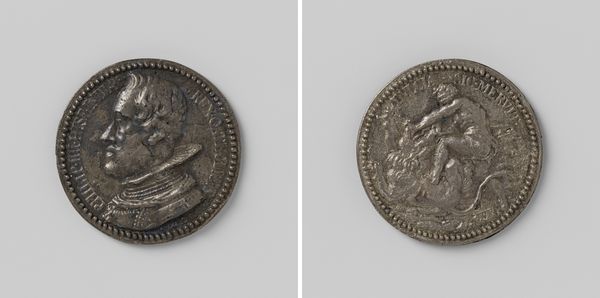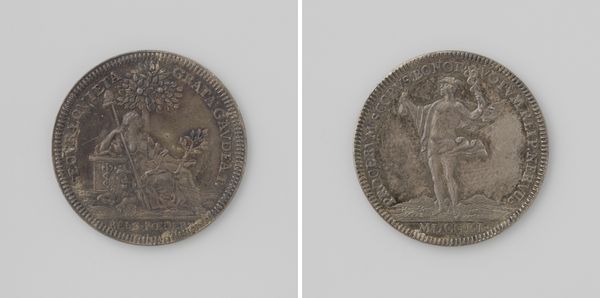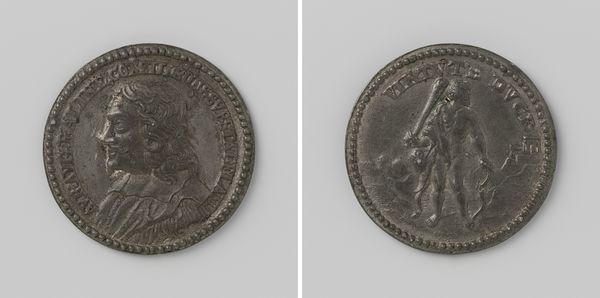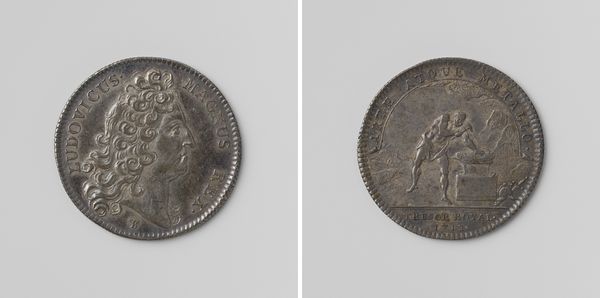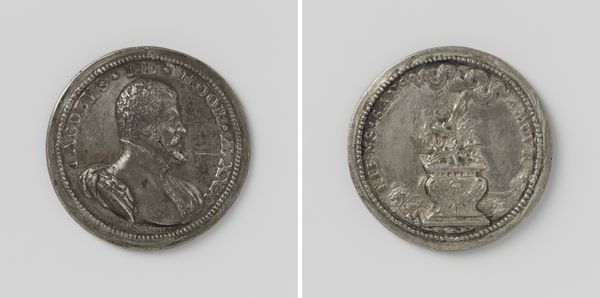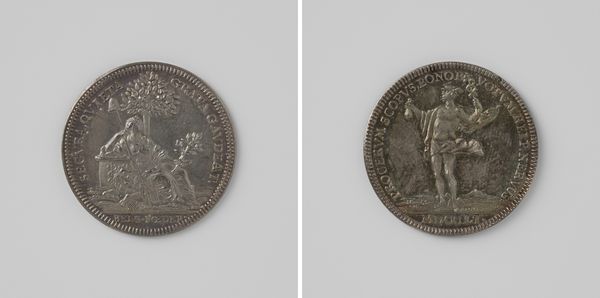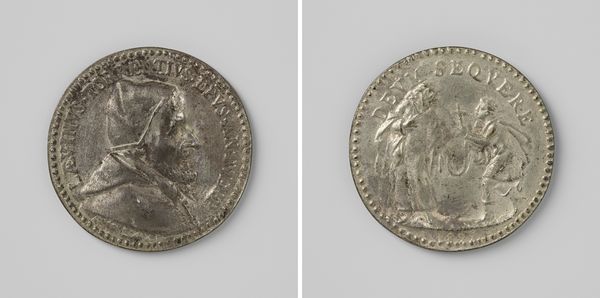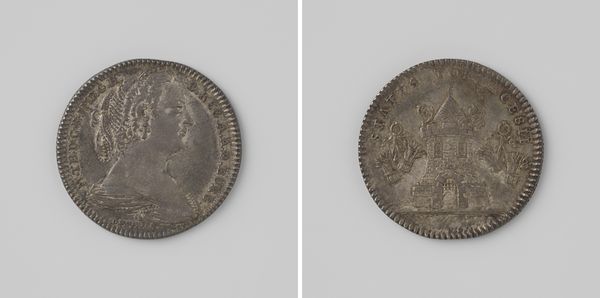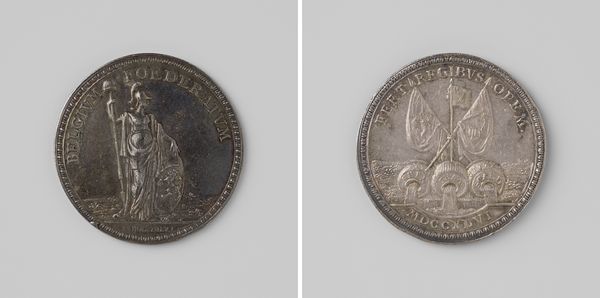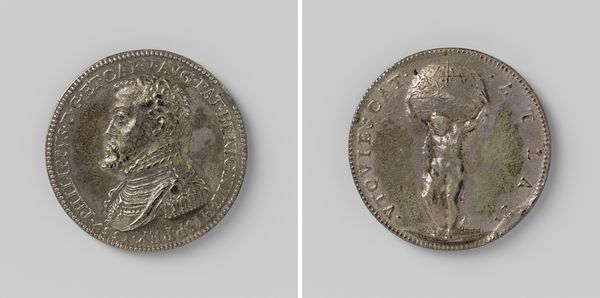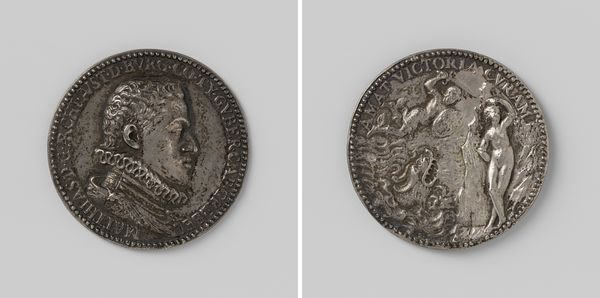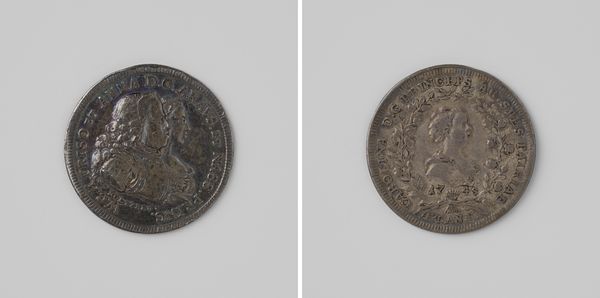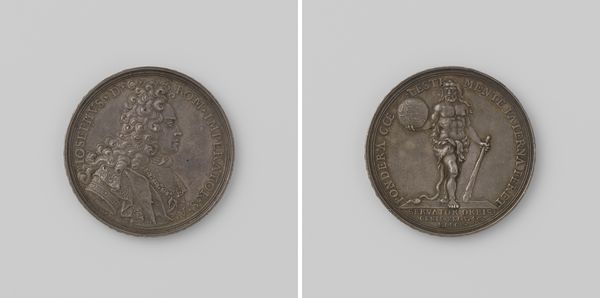
metal, relief, sculpture
#
portrait
#
medal
#
baroque
#
metal
#
sculpture
#
relief
#
sculpture
#
statue
Dimensions: diameter 4.7 cm, weight 26.36 gr
Copyright: Rijks Museum: Open Domain
Curator: Well, the relief sculpture "Antonius Triest, Bishop of Ghent," was crafted by Adriaan Waterloos in 1622. Editor: It strikes me as almost somber, despite the formal trappings. The subdued metal, perhaps silver, and the clear portrait on the one side, evoke a certain gravity. Curator: Yes, metalwork was central to the Baroque era’s aesthetic and social economy, particularly in objects of power and remembrance like this medal. Look closely at the tooling, at how the artist has shaped and manipulated the metal surface to create depth and texture. Editor: Absolutely, the technical skill is evident, but what truly interests me is what the imagery communicates about the power dynamics of the period. Antonius Triest, a prominent figure in the Catholic Church, had this created no doubt as an assertion of his authority. Notice the reverse with what appears to be a person bearing a cross. It's clearly steeped in religious and political ideology. Curator: You're pointing toward a good tension here. Medals like this were produced through highly specialized labor processes, reflecting guild structures and patronage systems of the time. The selection and manipulation of metal reflect access to resources and skilled workshops, which materially expressed social standing. Editor: Precisely, the Bishop’s status isn't solely religious; it is deeply embedded within broader socioeconomic networks. I see this piece speaking volumes about identity construction within the highly charged context of the Counter-Reformation. Think of how this medal might circulate – who sees it, who holds it, who does it impress and what are they told to think about the role of the church at the time? Curator: A potent observation! We often focus on the visual aspect, but you're reminding us to also consider its circulation as a precious object and to examine its production in a world of intense artistic rivalries, in workshops across Europe. The medal wasn’t merely art, but material testament to one man's ambition. Editor: That's why unpacking these objects through interconnected themes provides a broader view of power, material culture and identity formation within a crucial turning point in history. It connects what may appear on the surface to complex historical power relations. Curator: A valuable connection, reminding us to consider how deeply entwined production, access, and circulation were in establishing symbolic significance. Editor: Agreed, understanding these interrelations allows us to delve deeper into the visual representation.
Comments
No comments
Be the first to comment and join the conversation on the ultimate creative platform.
